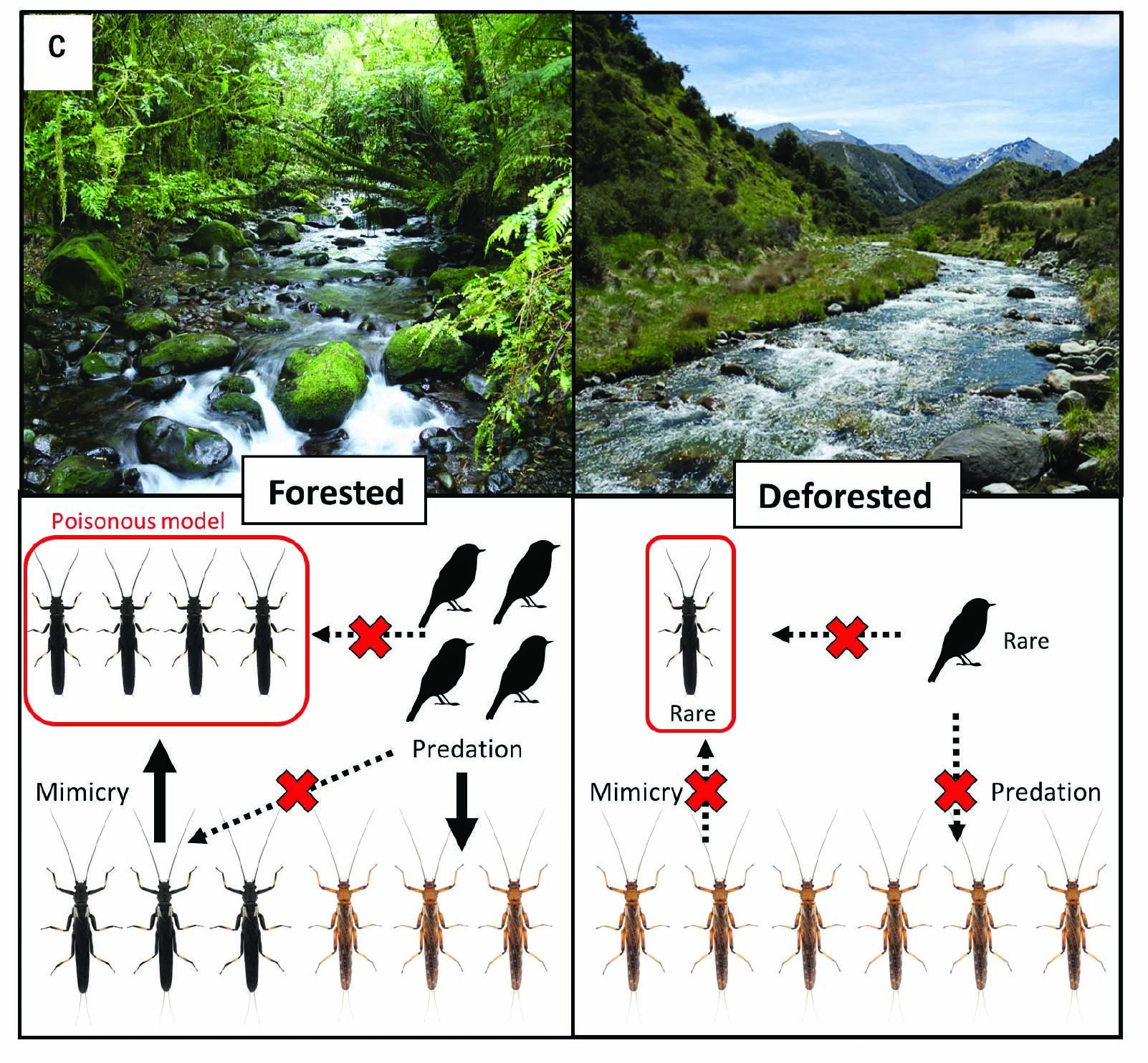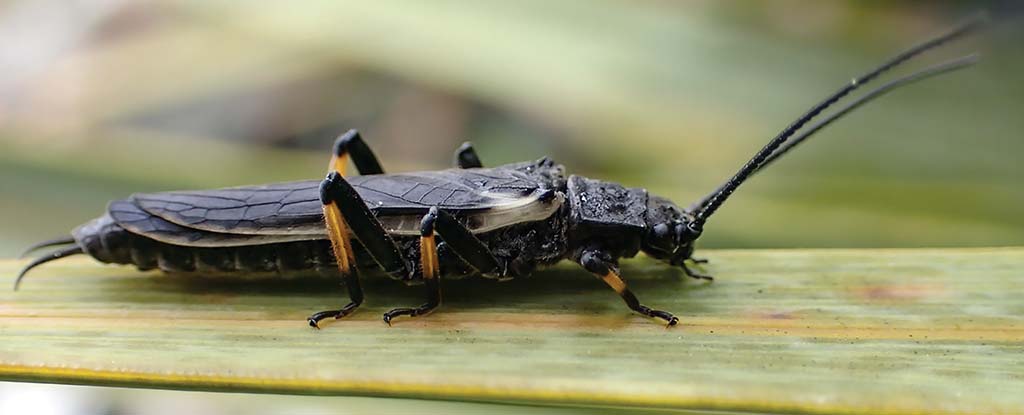A native New Zealand insect that once mimicked its toxic neighbor has changed color in deforested areas, in a striking example of human-induced evolution.
The long-tailed stonefly, Zelandoperla, had a clever strategy to avoid predation from birds: it mimicked the appearance of a uniquely toxic stonefly, Austroperla, a forest dweller that deters predators by producing cyanide.
Researchers from New Zealand’s University of Otago have found that in deforested areas without Austroperla in the picture, and with fewer bird predators, some Zelandoperla have given up their guise.
The findings highlight “the possibility for populations to adapt rapidly in the wake of sudden environmental change,” the team writes in their published paper.
While the long-tailed stonefly has no toxins of its own, it has managed to pull off a convincing impersonation of Austroperla using its genetic toolkit, which colored some of the insects a dark shade of ebony.
The disguise worked to deter their feathered predators, which, unable to tell the difference, steered clear of both the toxic stonefly and its mimic.
But Austroperla is a forest creature: it lives in streams where it feeds on leaves and woody debris. In deforested areas, its preferred food sources are lacking, and Austroperla has become less common.
“The removal of forests since humans arrived has removed the poisonous species,” says zoologist Jon Waters.
“As a result, in deforested regions the mimicking species has abandoned this strategy – as there is nothing to mimic – instead evolving into a different color.”
The scientists used a combination of field observations, predation experiments, and gene map analysis to show the insect’s response to human-driven change.
In experiments with models of the two different colors of Zelandoperla, they found predators attack only the non-mimic stonefly in forested habitats.
In deforested conditions, there was not only less predation overall, but predators actually sought out lighter-colored stoneflies less than their ebony counterparts.

Southern New Zealand’s heavy deforestation has been most intense since the early 1800s when European settlers arrived.
Even though humans have disrupted millions-of-years-old ecological interactions in just a few short centuries, the new findings indicate some species are resilient enough to adapt.
“[The study] also shows that independent populations have undergone similar changes in response to deforestation,” zoologist Graham McCulloch explains.
The team found found populations of Zelandoperla had a three-fold shift away from their ebony hues in multiple different deforested regions, always in tandem with a drop in Austroperla numbers and birdlife that comes with less tree cover.
“There have been similar shifts independently in different parts of the species’ range – showing that evolution can be a predictable process,” McCulloch says.
This research is published in Science.





